India, oh India… What a special place you hold in our memories and fantasies of exotic travel!
When Peta was diagnosed with breast cancer and had to confront death, in 2005, I (Ben) seized on the mind-focusing event to ask Peta what was the one thing she had not done that she would want to do, assuming she would survive the often fatal disease.
Peta did not hesitate, and said “India!”
And so it was that to celebrate Peta’s successful recovery, we booked a trip to India and had one of our best trips ~ to Northern India, in Rajasthan specifically. Due to mundane life issues like work and responsibilities for children, we could only take a couple of weeks and promised ourselves to come back one day for a more extended adventure across the country.
We launch our second India adventure, coming from Sri Lanka, to the Southern tip of India. A very short and sweet forty minute flight gets us to Kerala. We land in Trivandrum airport and take a taxi directly to Verkala, just an hour North.
Quite a dramatic difference to the extremely long flight to get to India from the U.S. Instead of arriving exhausted and jet lagged, we arrive fresh and ready for our first Indian breakfast. Culturally India is usually quite a dramatic change for anyone coming from afar, but coming from Sri Lankan (which some say is India “light”) it feels like an obvious and natural transition for us.
What hits one first when arriving in India is the immediate burst of intense colors. And Verkala is no different. A kaleidoscope of bright colorful saris and kurtas (long tops) on women and children, line the beach. Many of the men wear lungis, which is a piece of cloth with no buttons, or zips (much like a sarong). The plain white version which is popular in Kerala, is called a mundu and used for daily wear. Here the cloth is doubled over which shortens it to the knees, (a bit like a baggy mini skirt.)
Papnasam beach is an important Hindu center of pilgrimage. It is believed that a dip in the holy waters at this beach will purify the body and wash away all sins (puja). As well, Hindus bring the ashes of deceased loved ones to get blessings from one of the Brahmins on the beach and for the releasing of the ashes into the sea.
There is a 2000 year old Hindu temple near the beach, Janardhana Swarmi Temple. Devotees come from all over the country to worship at this shrine, which is said to cure many ills.
The main language of Kerala is Malayalam. Not many speak English here and we are, to our delight,the only foreigners on the beach. People enjoy taking their pictures with us and we join them at the edge of the Arabian ocean, getting our legs and clothes wet by the warm surf. Modesty prevails and everyone wears clothes to the beach and into the water. (Much the same as in Sri Lanka and Nicaragua.)
Being on this beach soon after our arrival, is one of those times we both love while traveling ~ we feel captivated and invigorated by the sheer joy, intensity and novelty of the present moment.
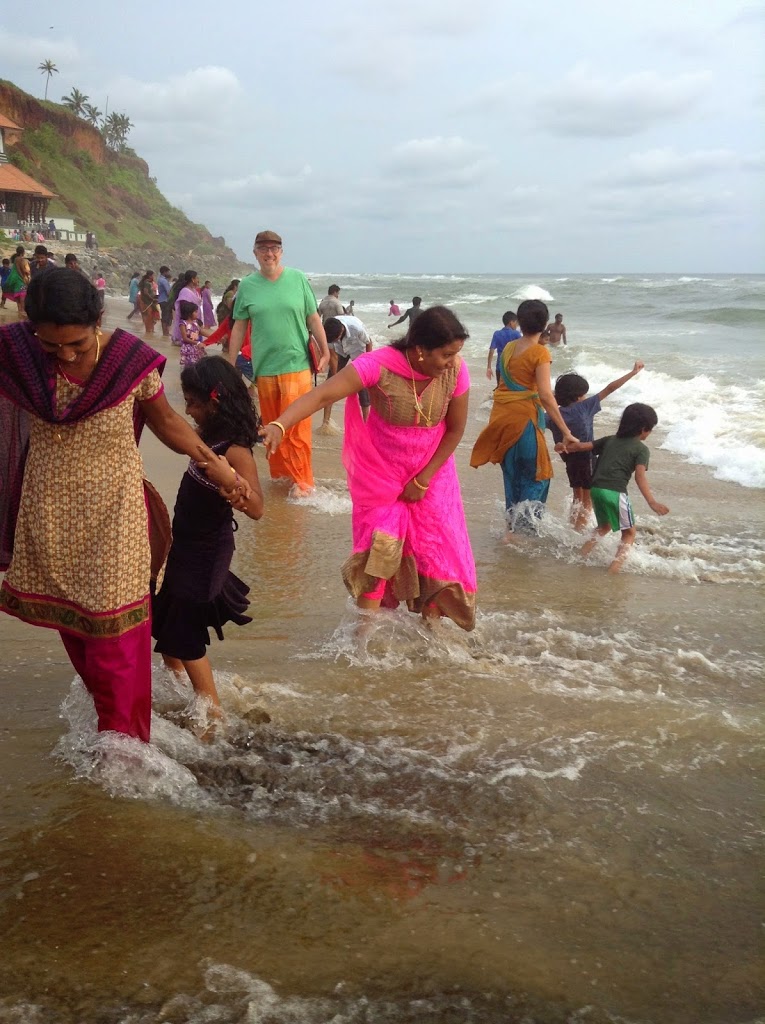 |
| Ben in the background wearing his lungi from Sri Lanka (the longer version). |
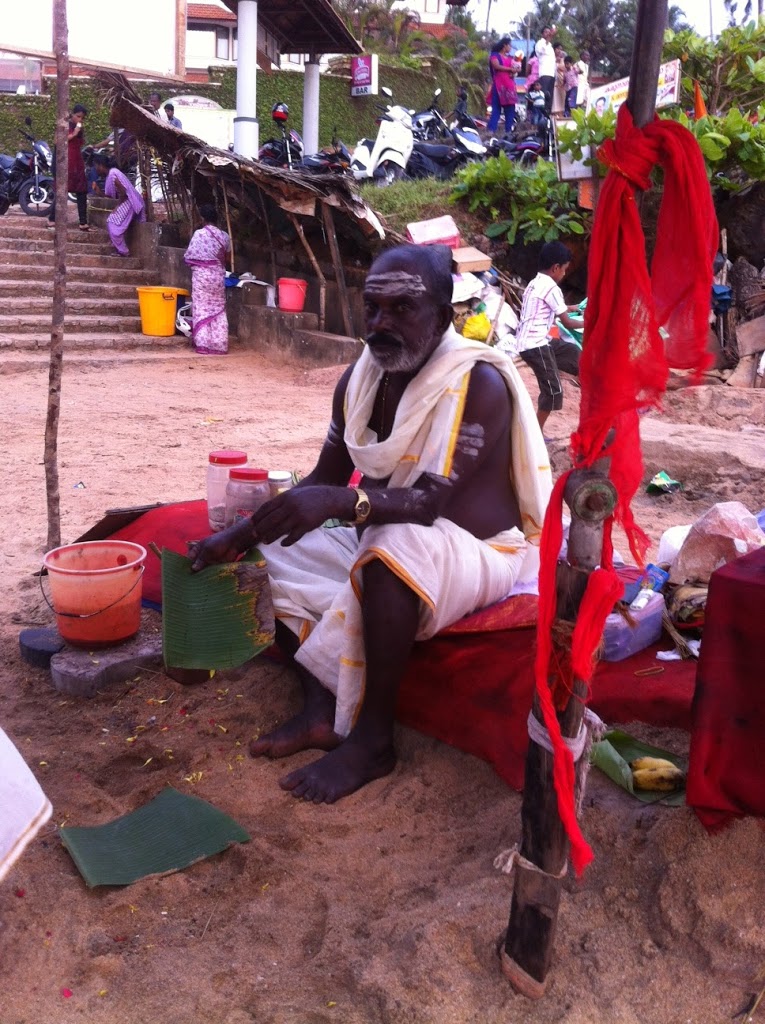 |
| Brahmin in waiting… for families arriving with ashes of deceased love ones, desirous of his blessings |
 |
| The brahmin conducts a small family “ceremony” of blessings. He uses rice, flower petals and holy water. |
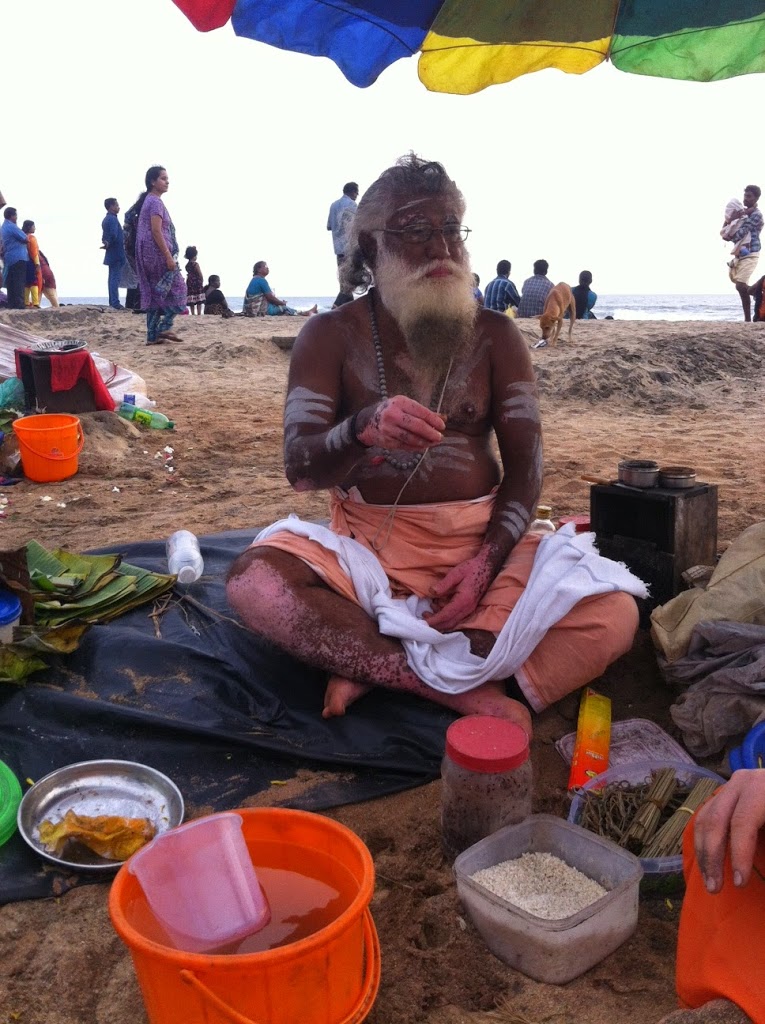 |
| This Brahmin has quite a look. |
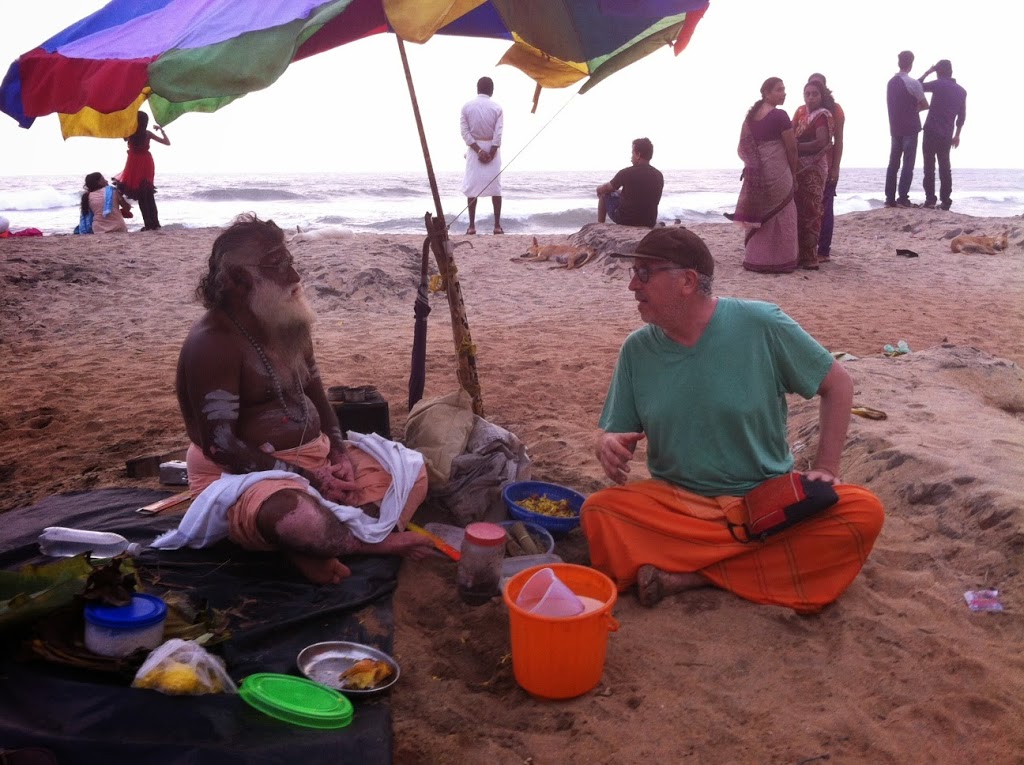 |
| Ben sits down with a Brahmin for a chat and introduction to the blessing process. |
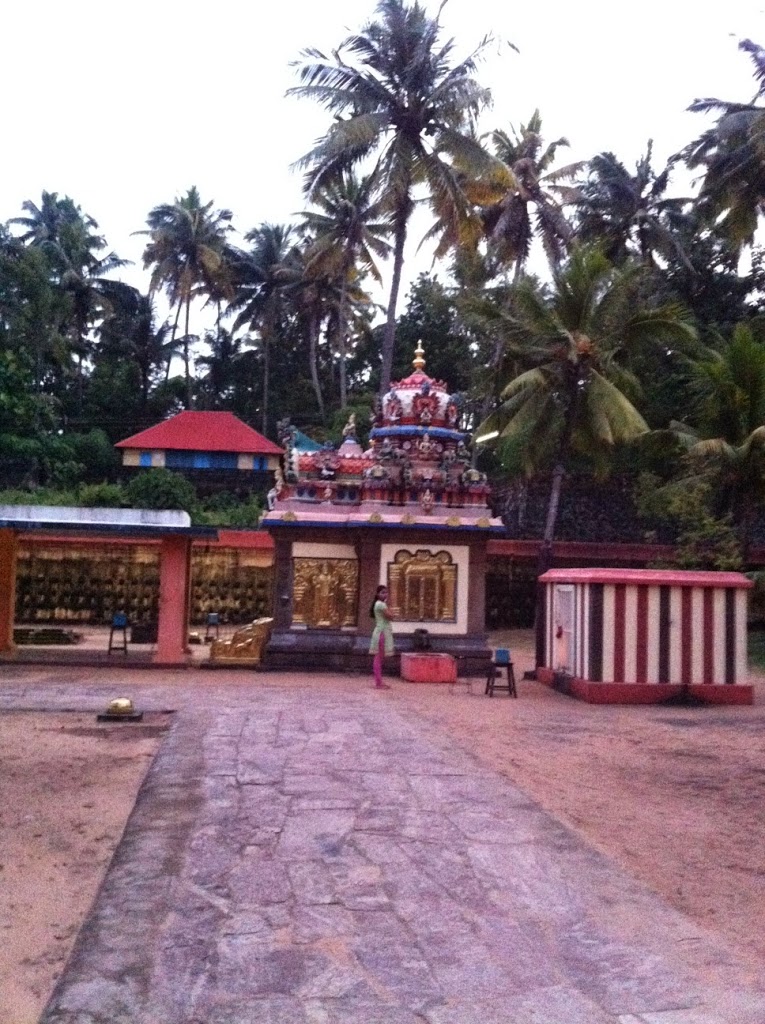 |
| Janardhana Swarmi Temple. |
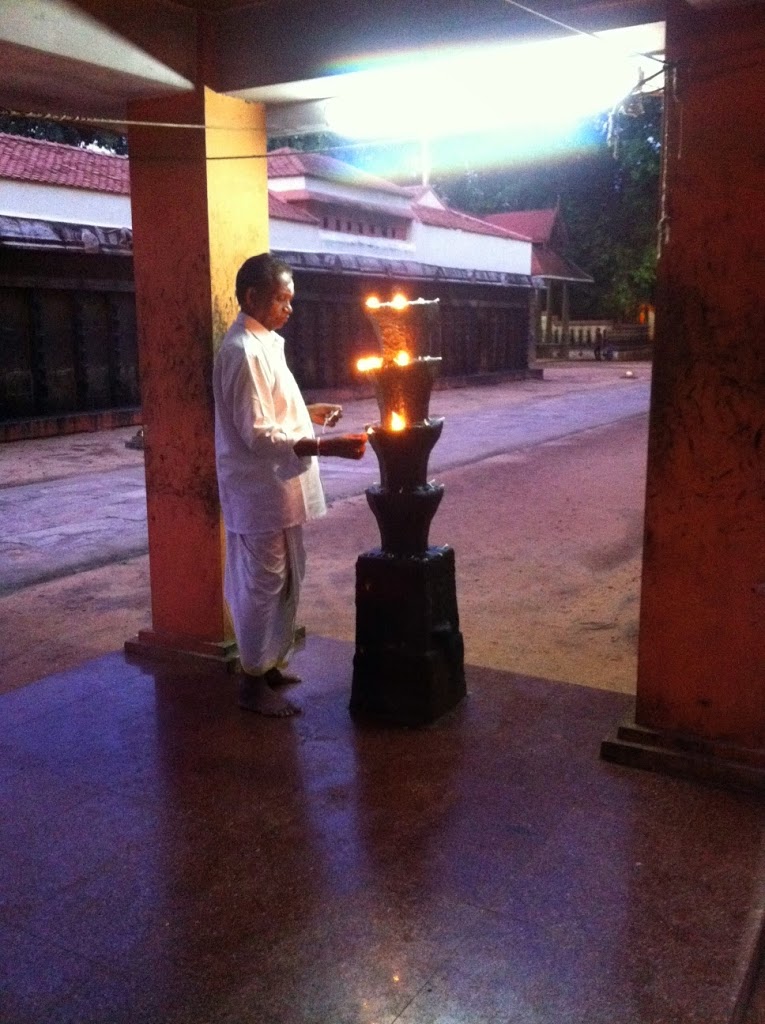 |
| Oil lamps are lit as part of a personal praying ritual |
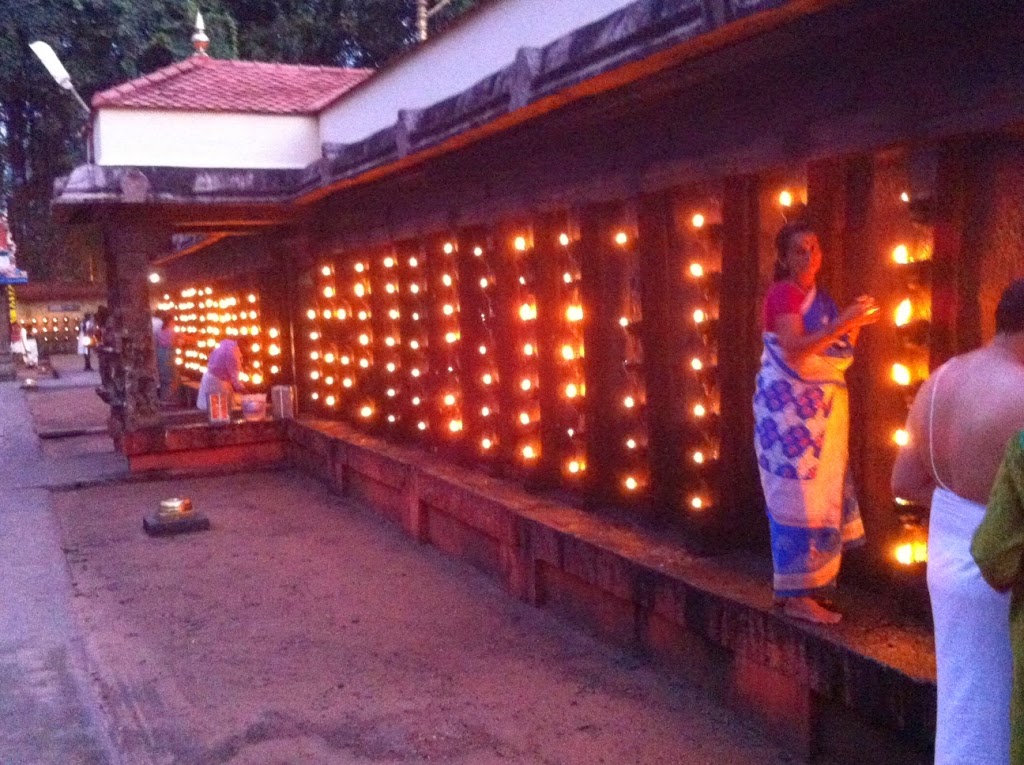 |
| A wall full of individually lit candles |
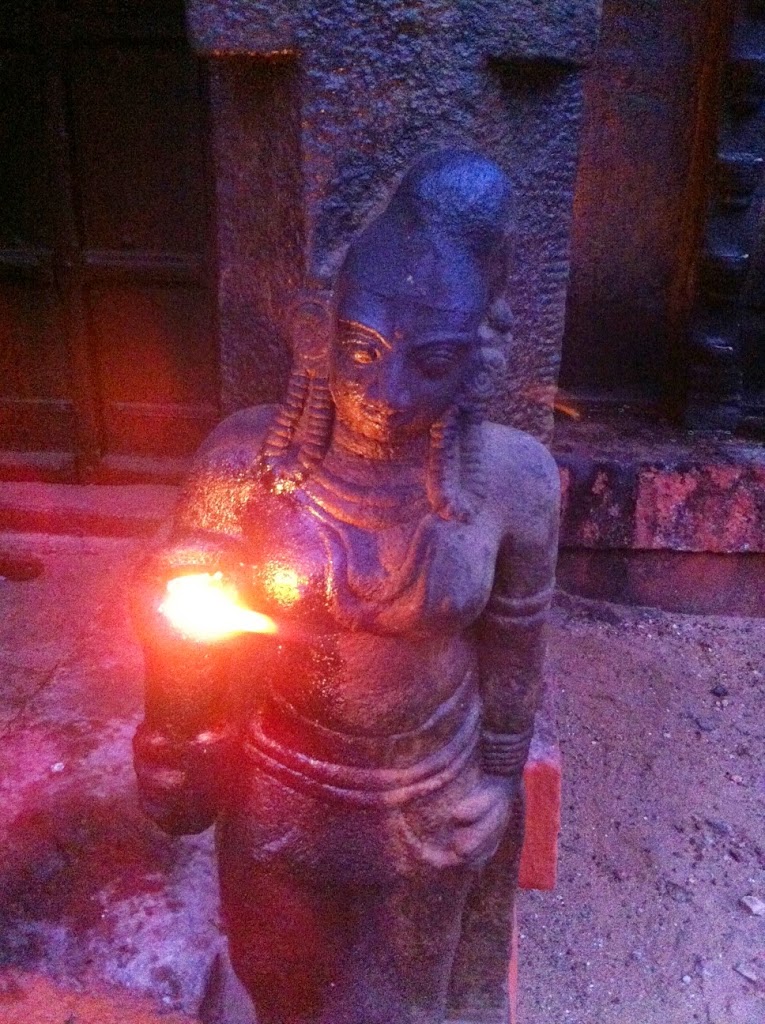 |
| Hindu goddess… |
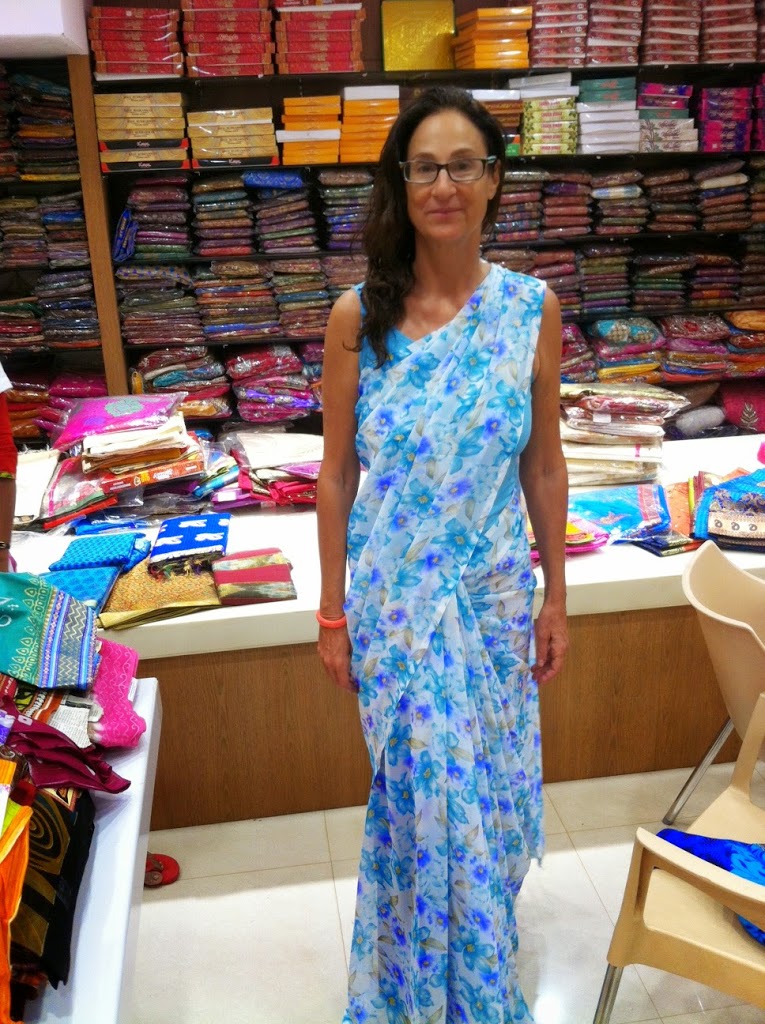 |
| My goddess… |
Of course, it would be impossible to write a first blog entry about Southern India without addressing the food. Tis the stuff of wonder for foodies, and vegetarian foodies all the more so. We find a small vegetarian family restaurant where we have a few meals, trying out the different delicious options. Southern Indian food is rice based. Rice combined with lentils to make wonderful dosas, idlis, vadas and uttapams. These are combined with dal/paruppu (lentil) and tamarind dal, dry and curried vegetables, chilies, curry leaves, fenugreek seeds and of course coconut. Dals and curries are more soupy here in the South, than North Indian varieties. The result is an unusual blend of flavors, seasoning, nutritional balance, fragrance and taste. Very delicious and addictive.
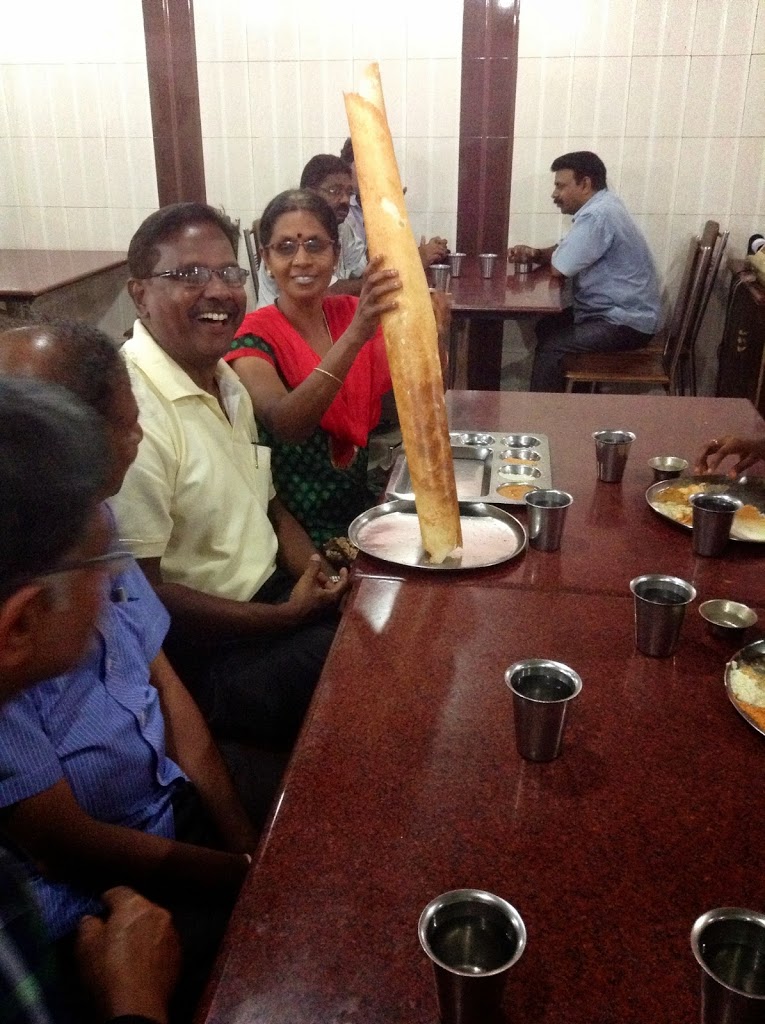 |
| This family at the table next to us, give us a basic explanation of what they think we should order. That long beautiful crispy “crepe” is called Roasted Paper and is absolutely delicious. |
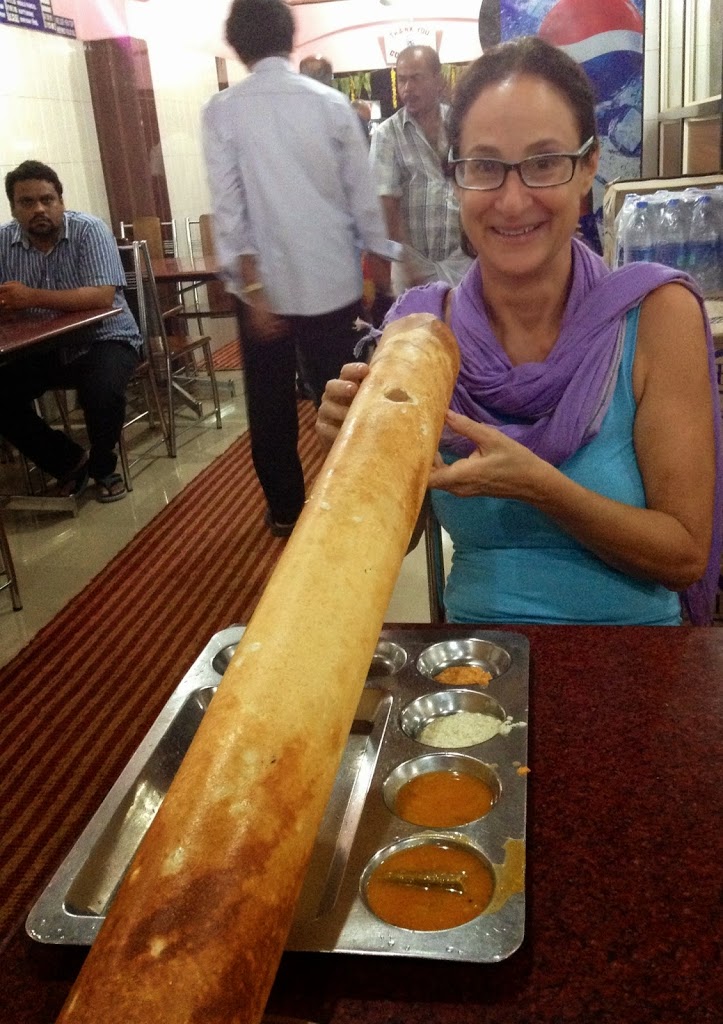 |
| The Roasted Paper is huge. But we easily eat it between the two of us. Eaten with the right hand, dipping pieces in to the coconut or onion chutney and two types of dahl curries. |
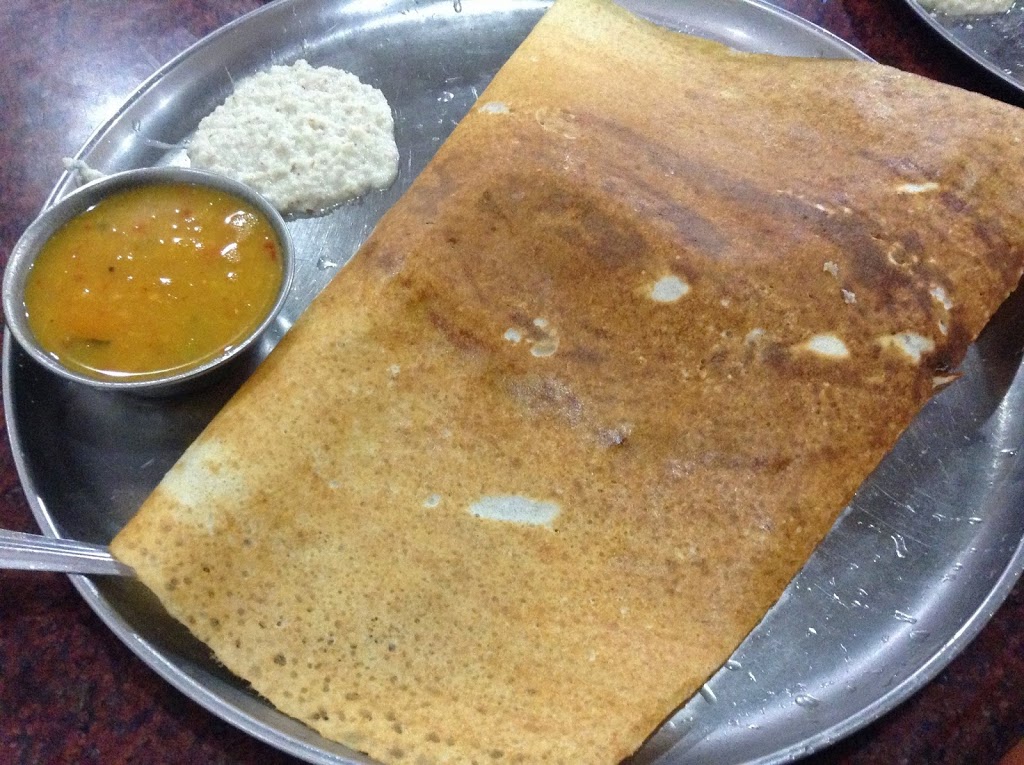 |
| Many different varieties. Chutney and dahl are kept filled by the “waiter” who carries buckets of them and does refills for all the customers. Drink of choice, hot Horlicks (British malted milk hot drink.) |
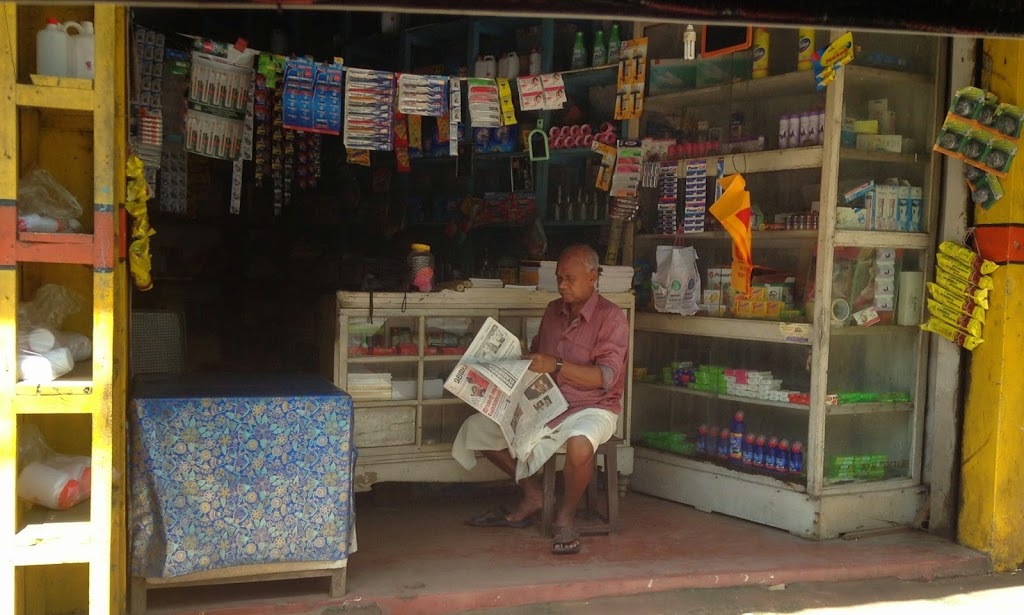 |
| A shop owner sits in the front of his shop reading the newspaper while waiting for customers. |
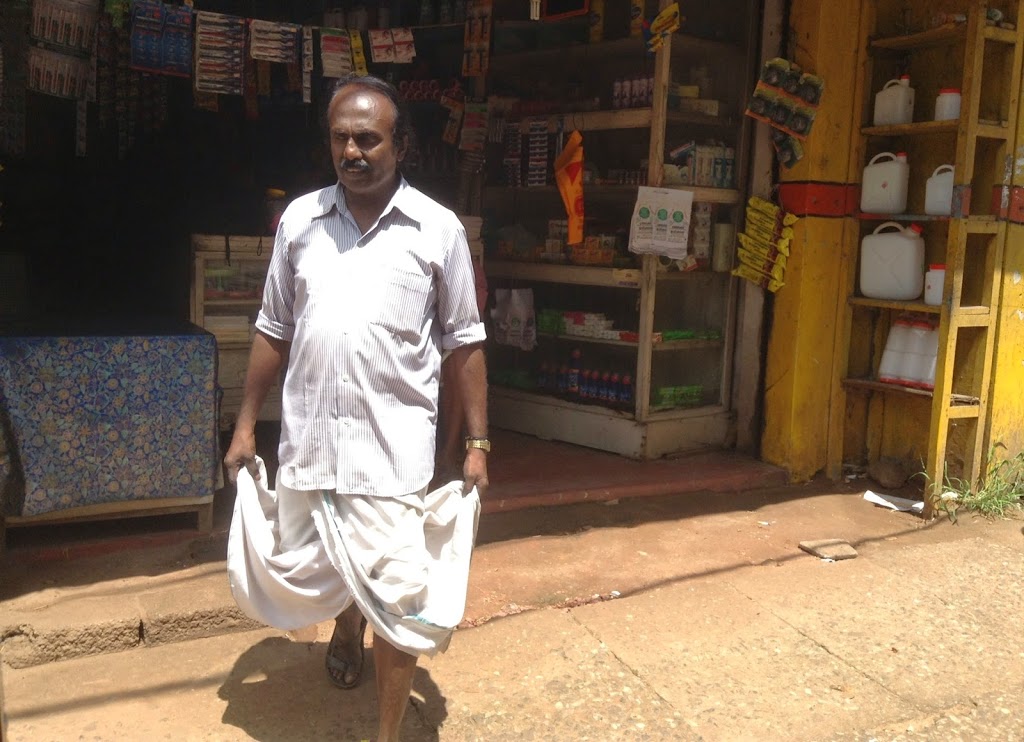 |
| Many men wrap and unwrap their mundus ~ short, long and short again. |
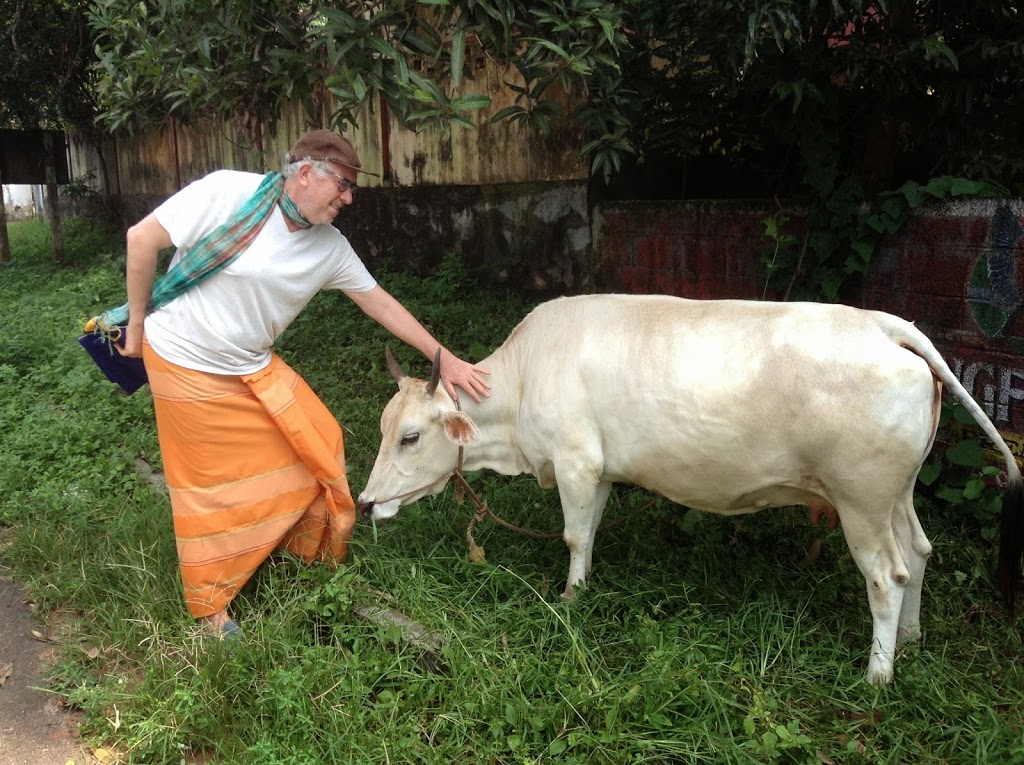 |
| Always time to pat a holy cow. (However due to the fact that there are Christians in Kerala, this one might not be safe from consumption.) |
After a few days onward we go, by train, to Kochin ~ making our way North.
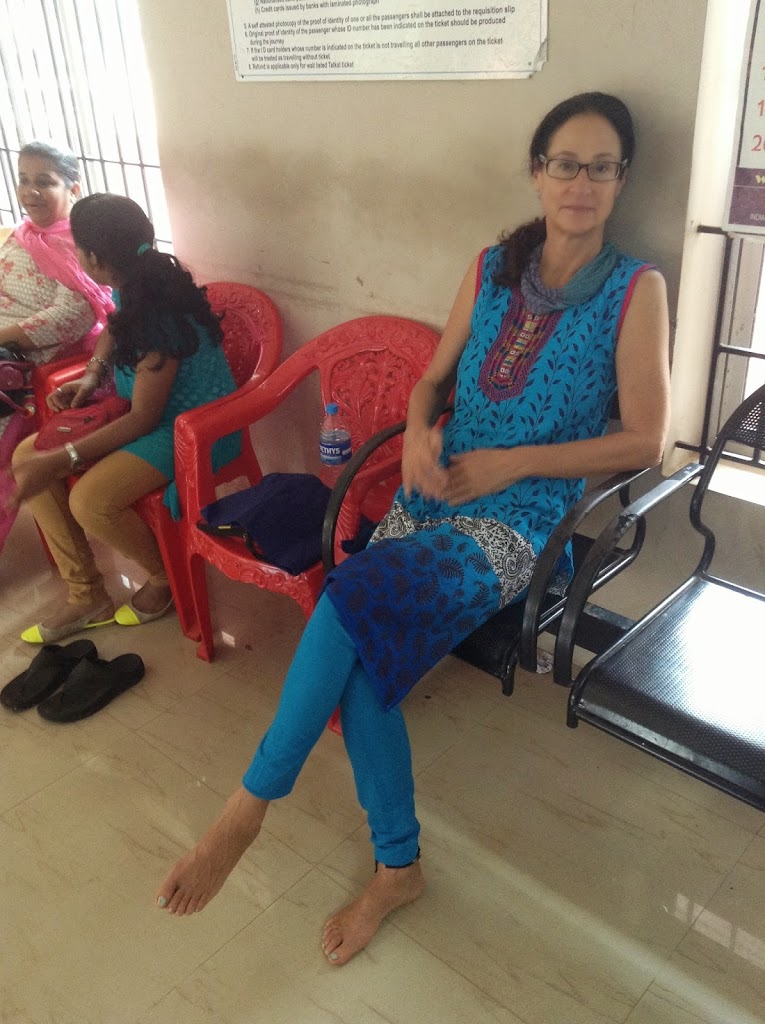 |
| Waiting while Ben buys our train tickets. Patience is a virtue/necessity in India. |
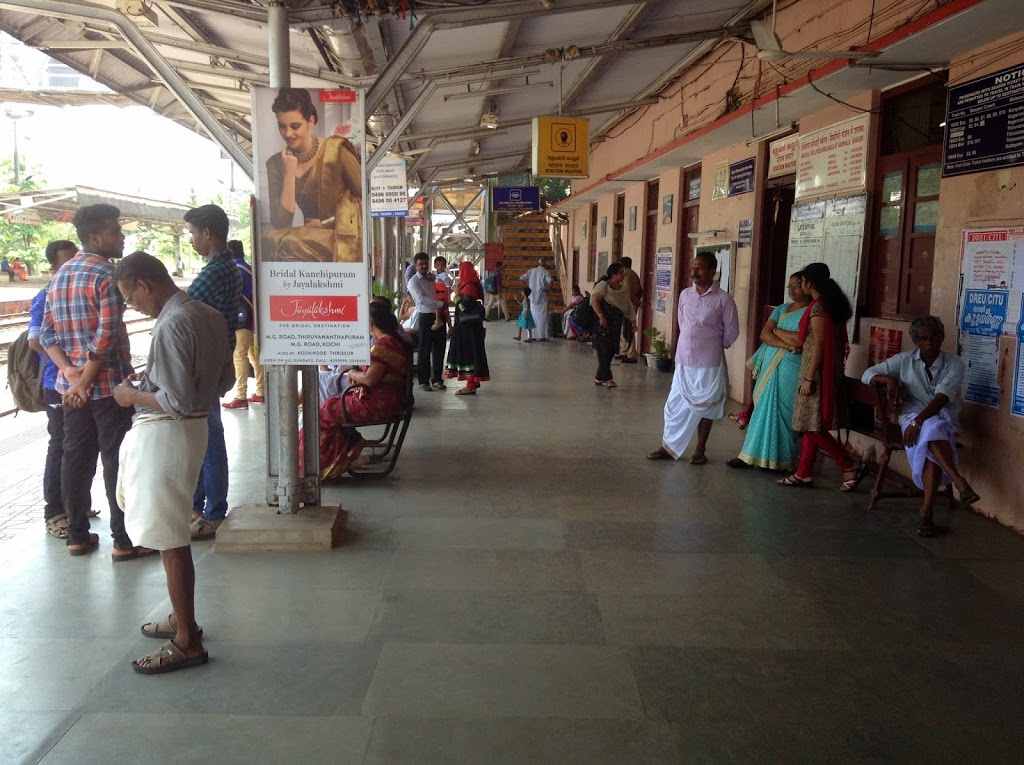 |
| At the station waiting for the train to Kochi. |
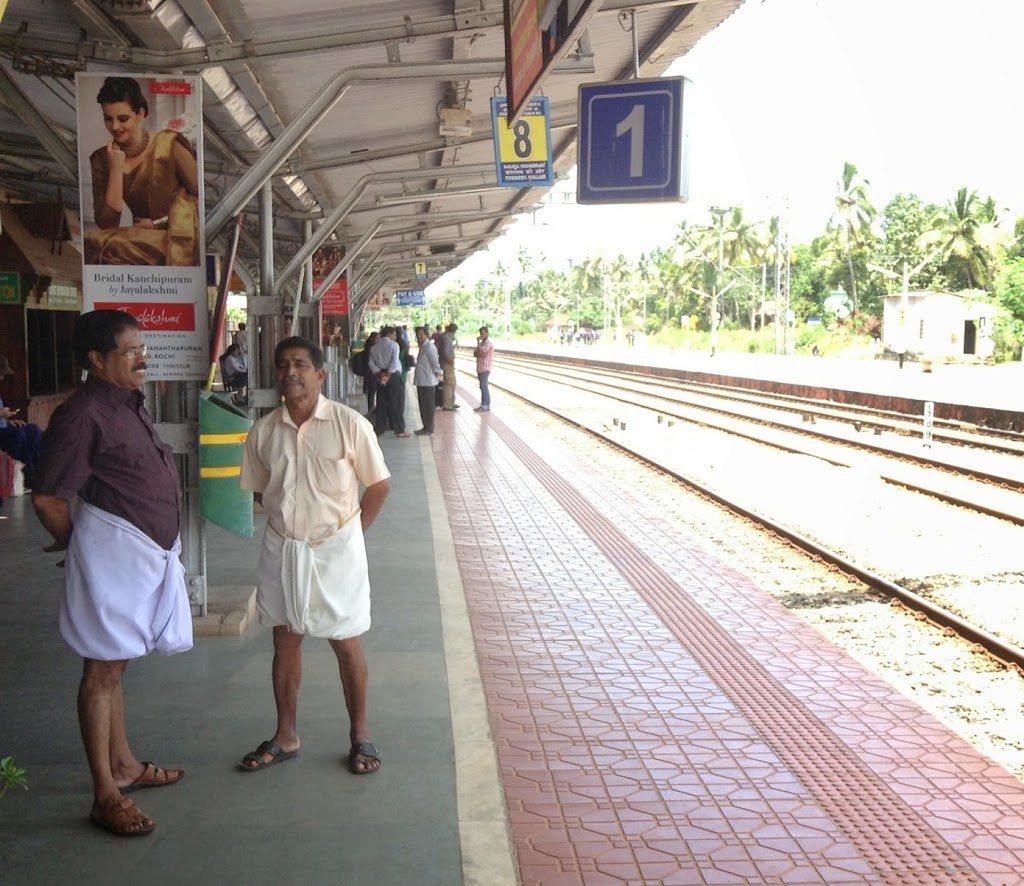 |
| Two men waiting for the train. |
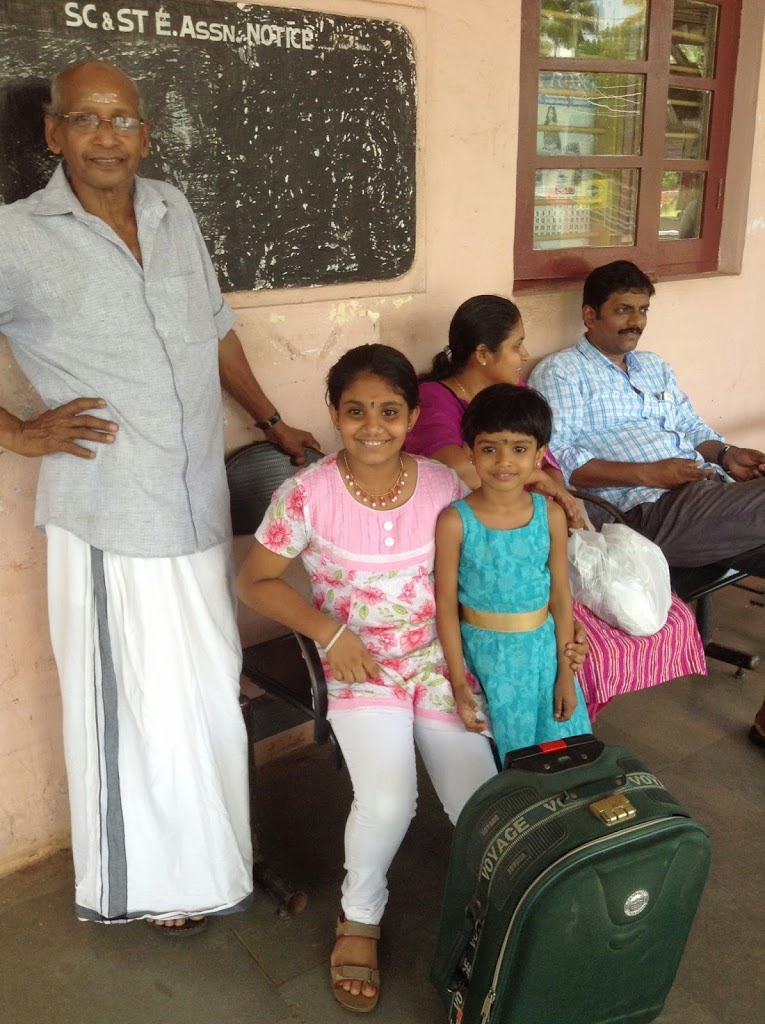 |
| A family waiting for the train. Grandfather on the left wearing a long white mundu. |
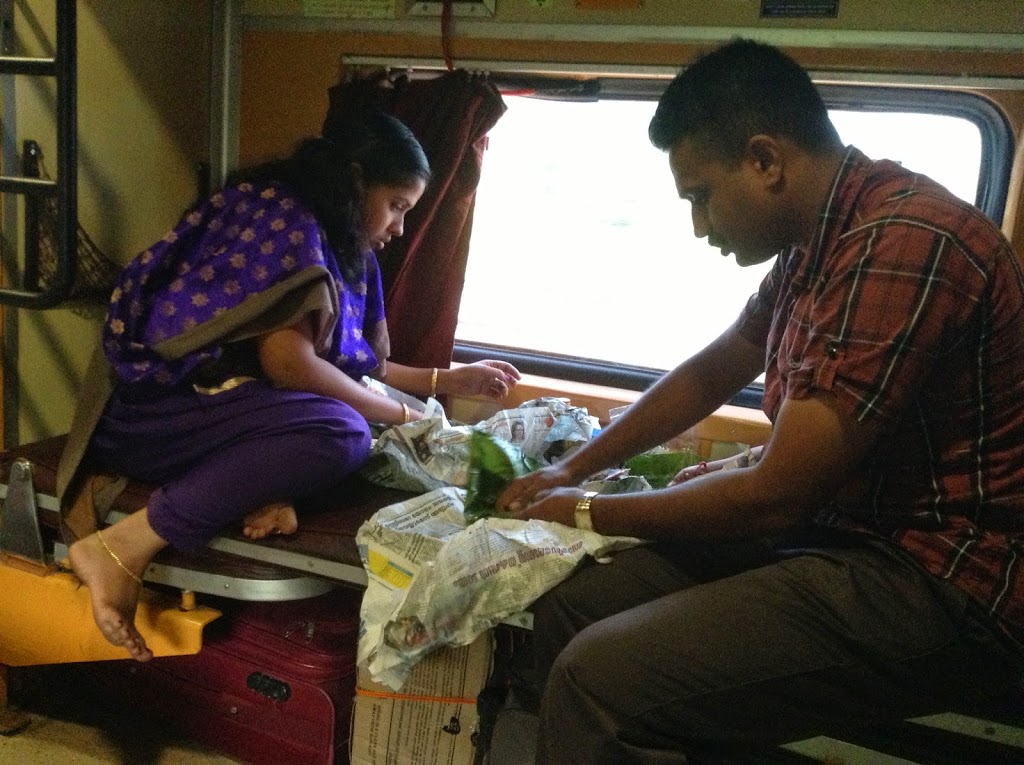 |
| There is a kitchen on the train, but most people bring along a package of food from home. Wrapped in a banana leaf and then newspaper. (Nice change from the overly used plastic bags in Thailand.) |
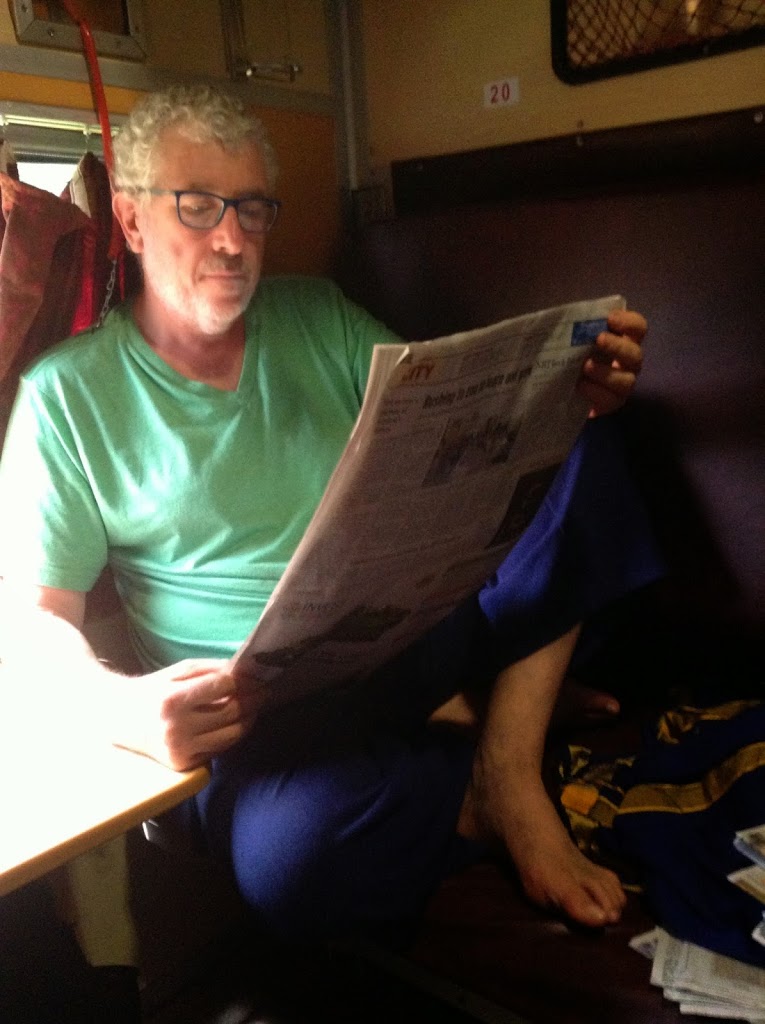 |
| Some “booths” are pretty full, but we get lucky and Ben even gets to read his papers on the journey. |
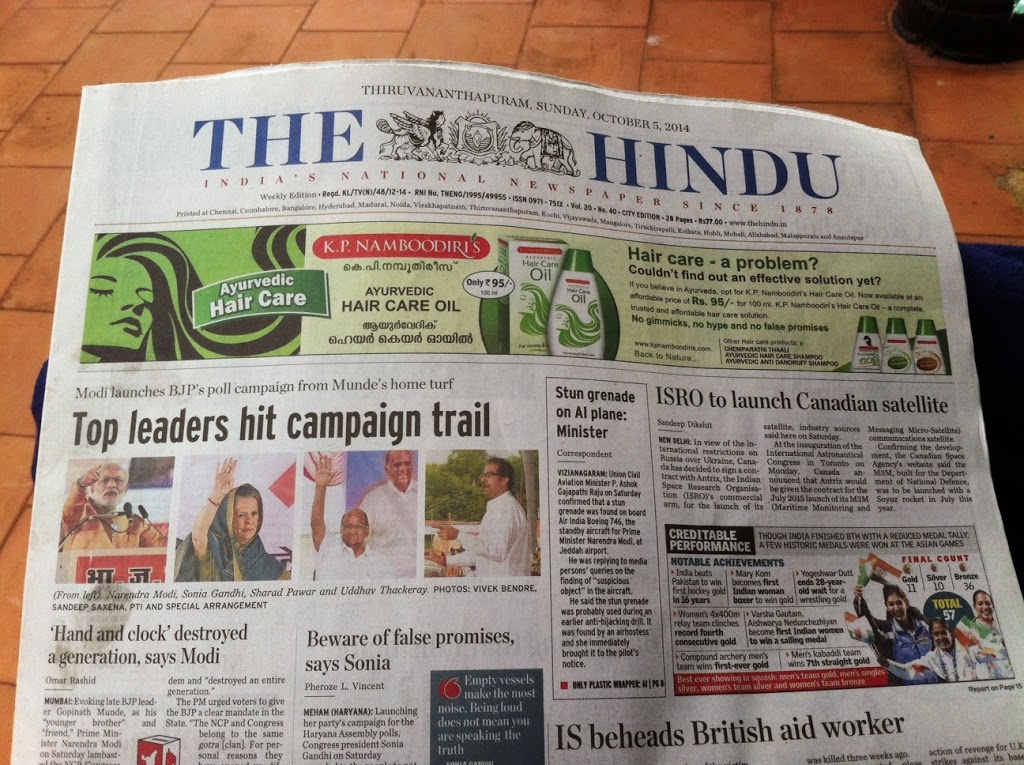 |
| A new country – a new newspaper to discover… Ben is in heaven… |

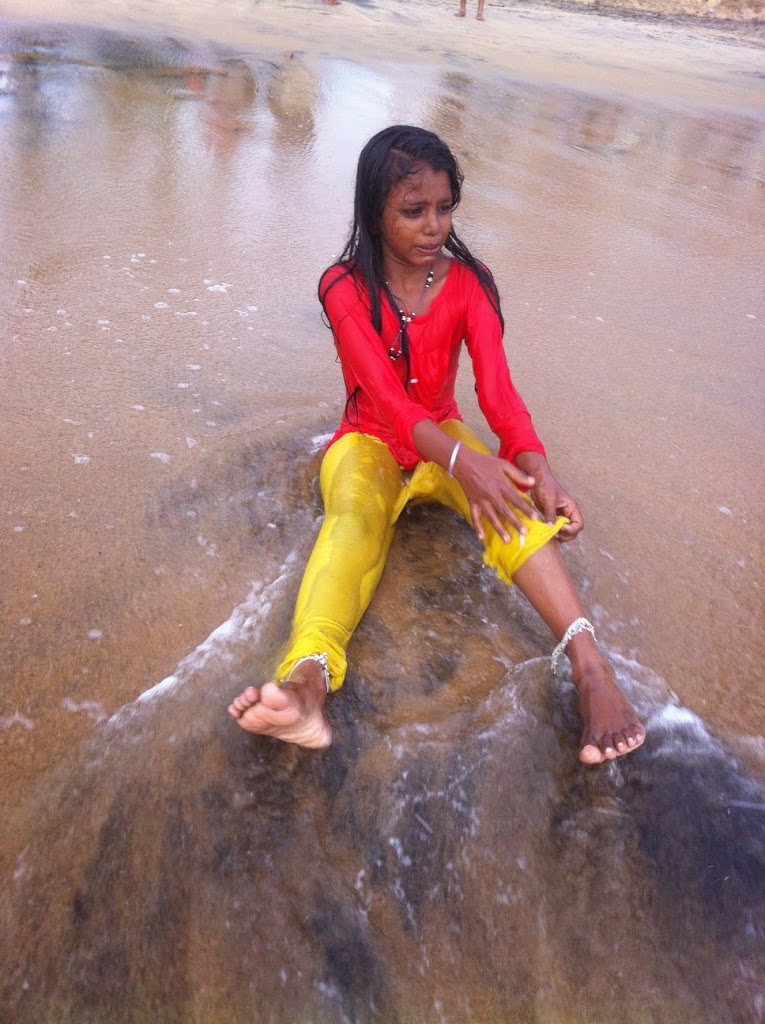
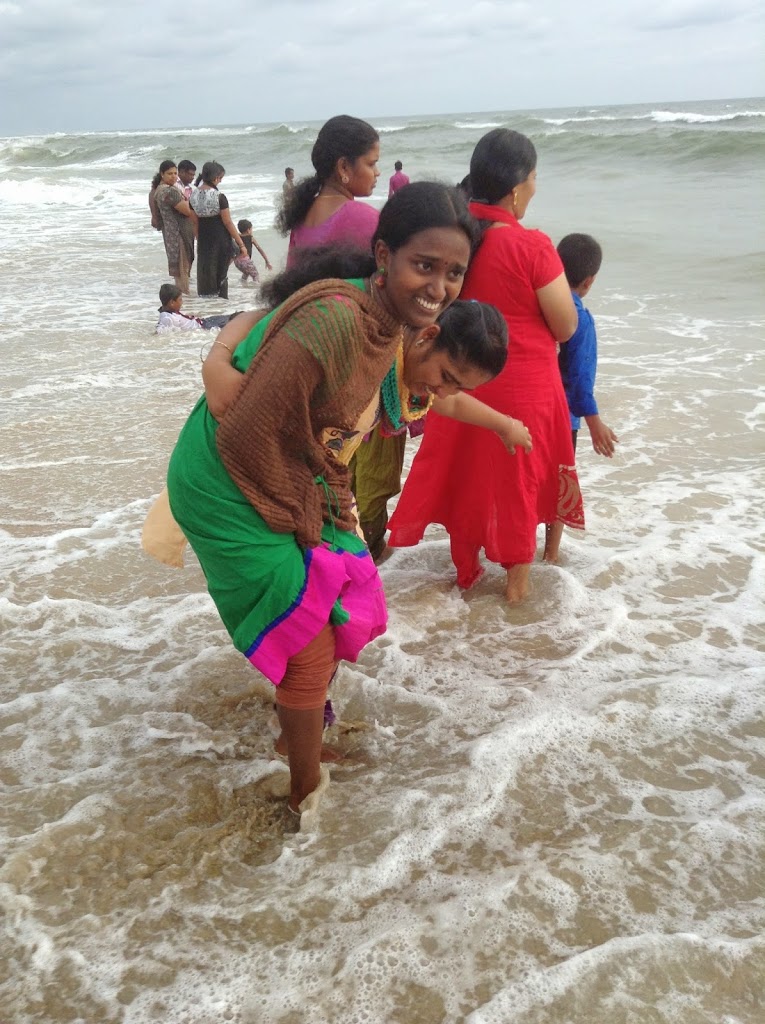
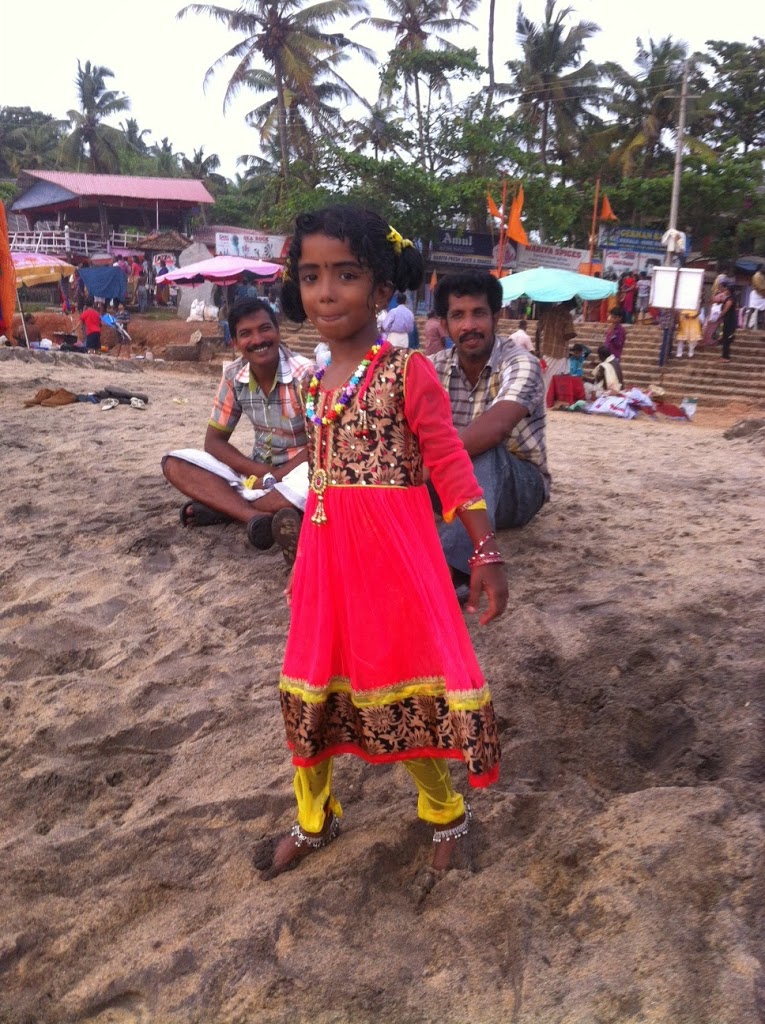

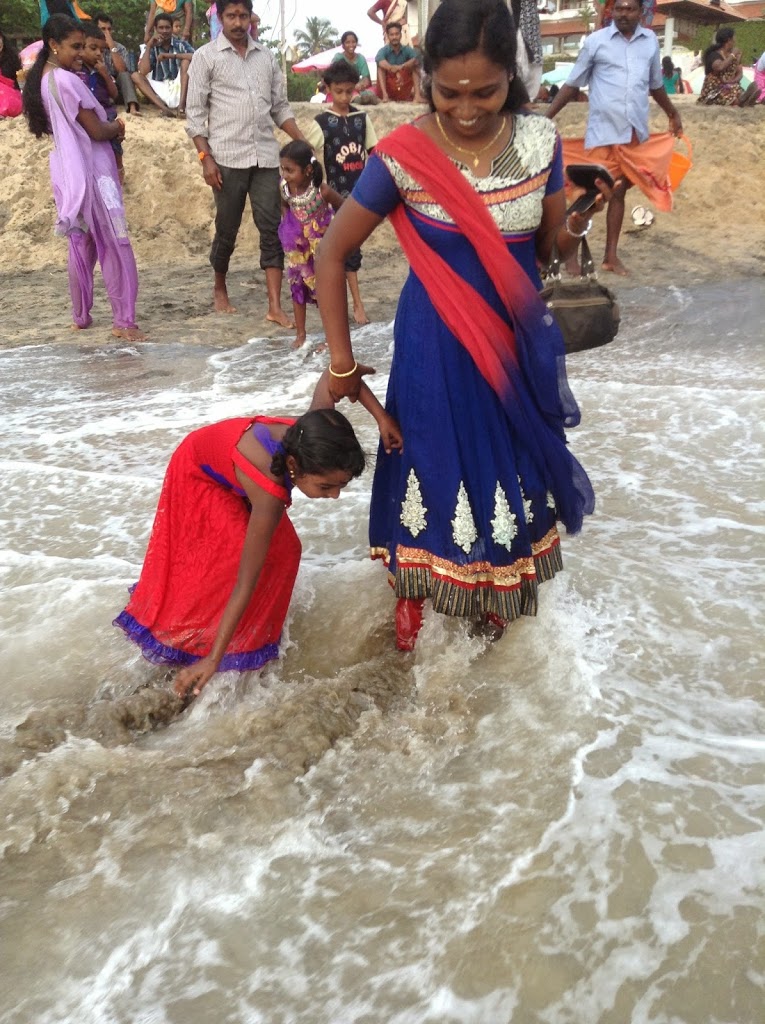
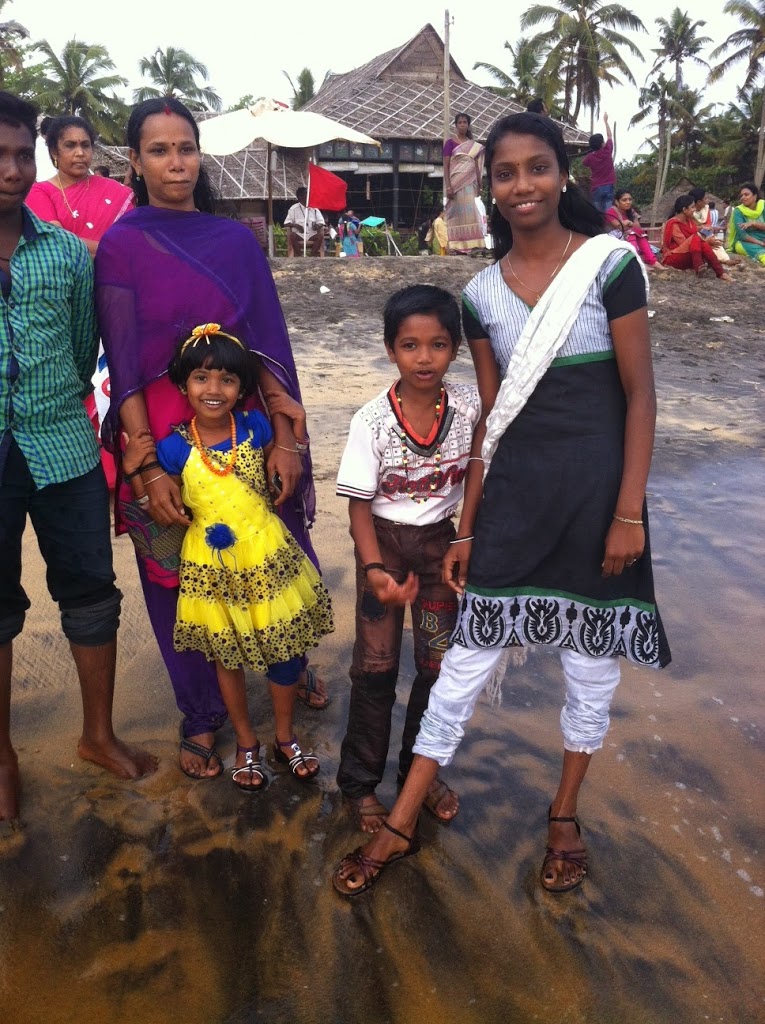

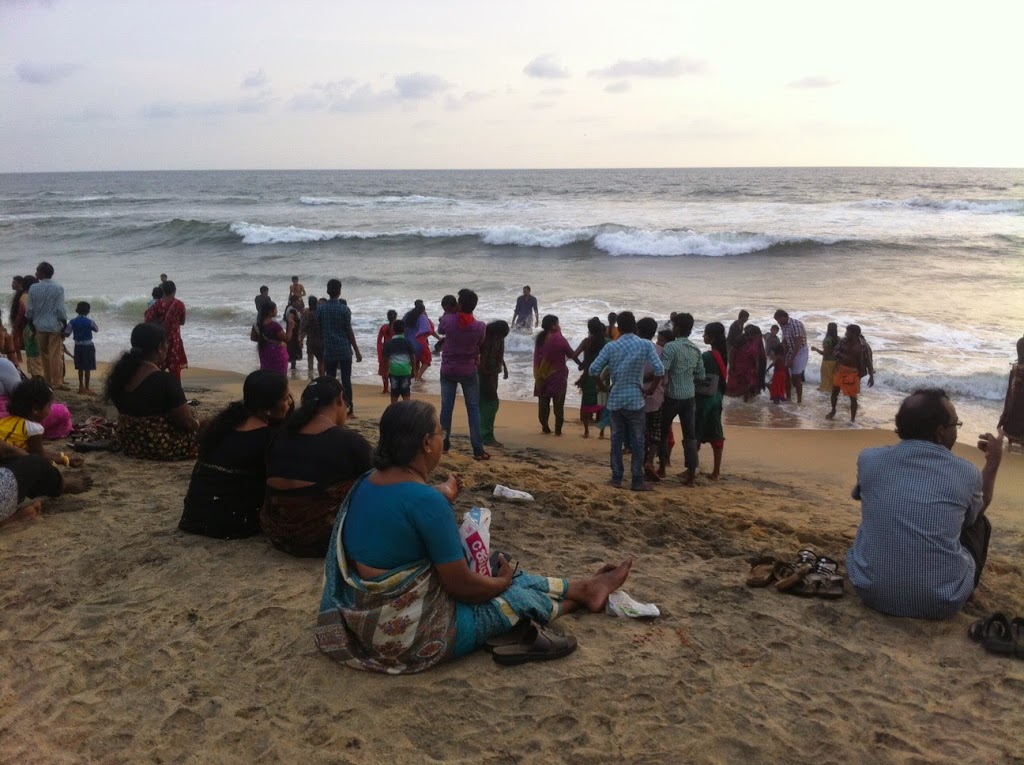


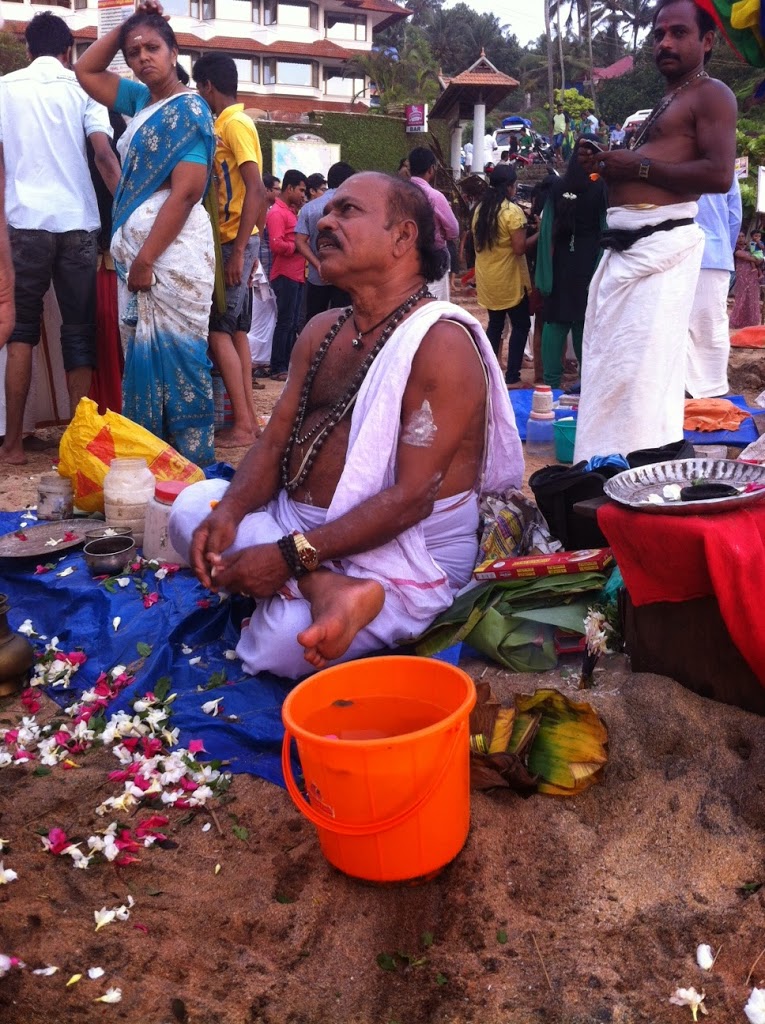



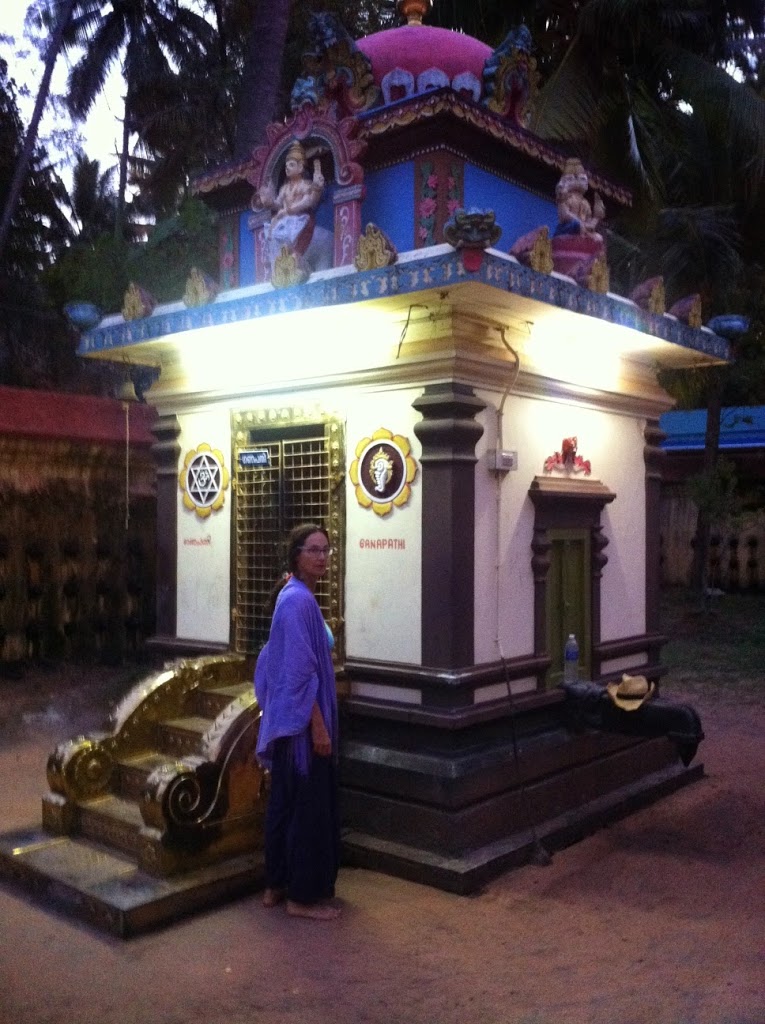














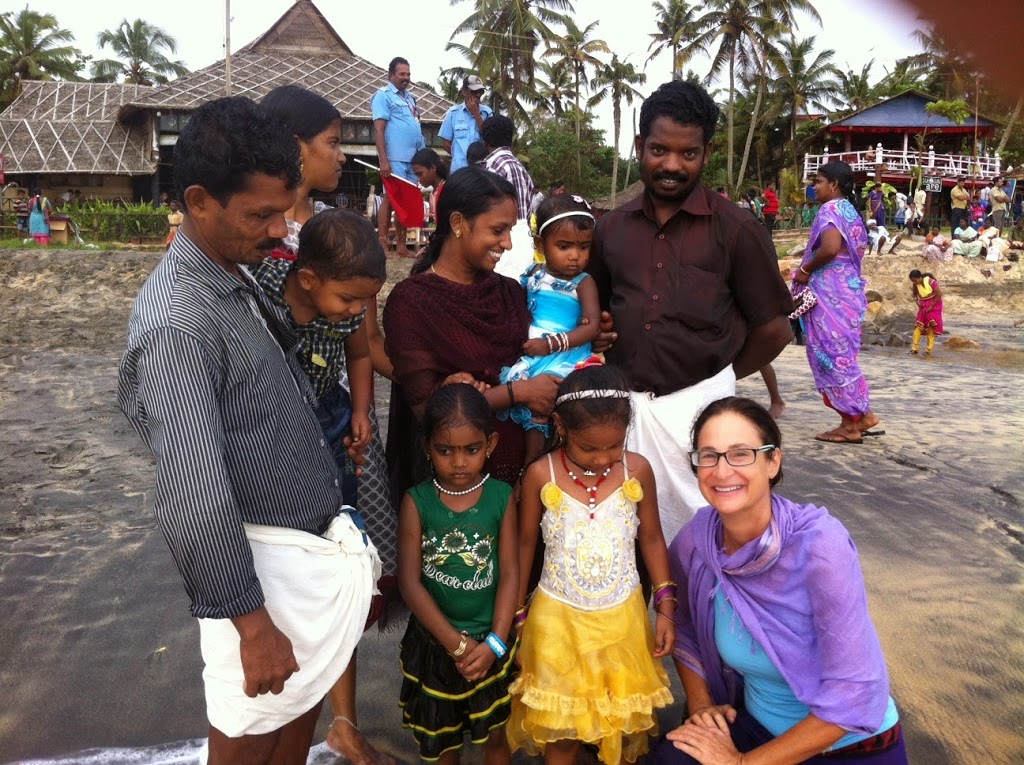
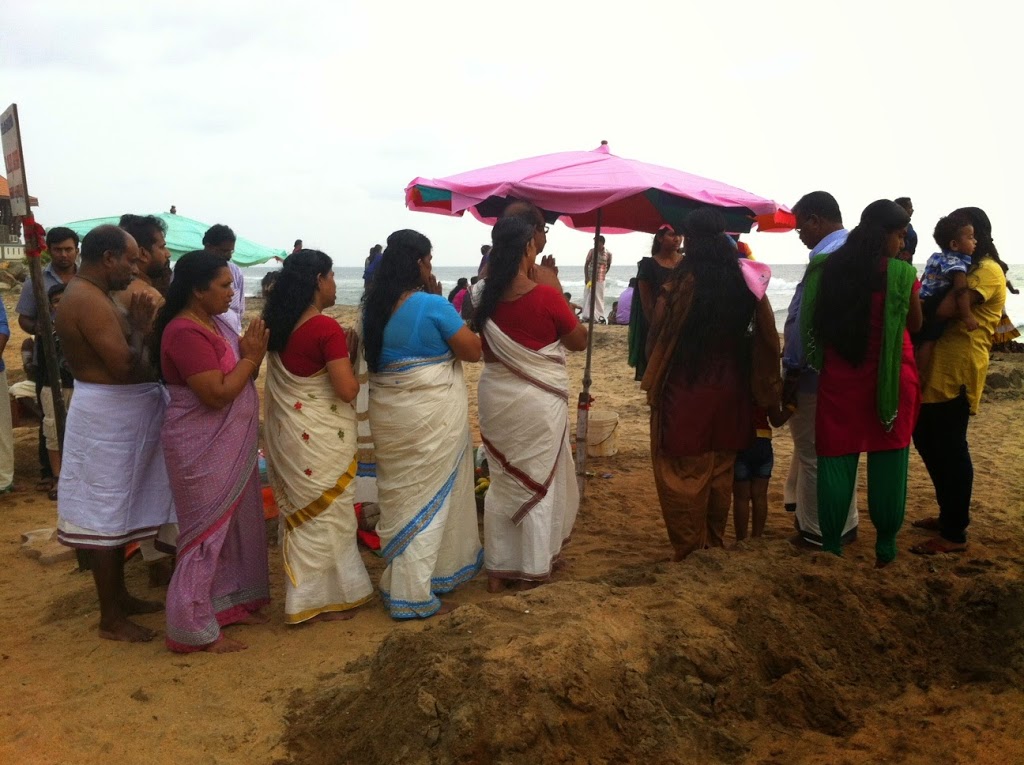
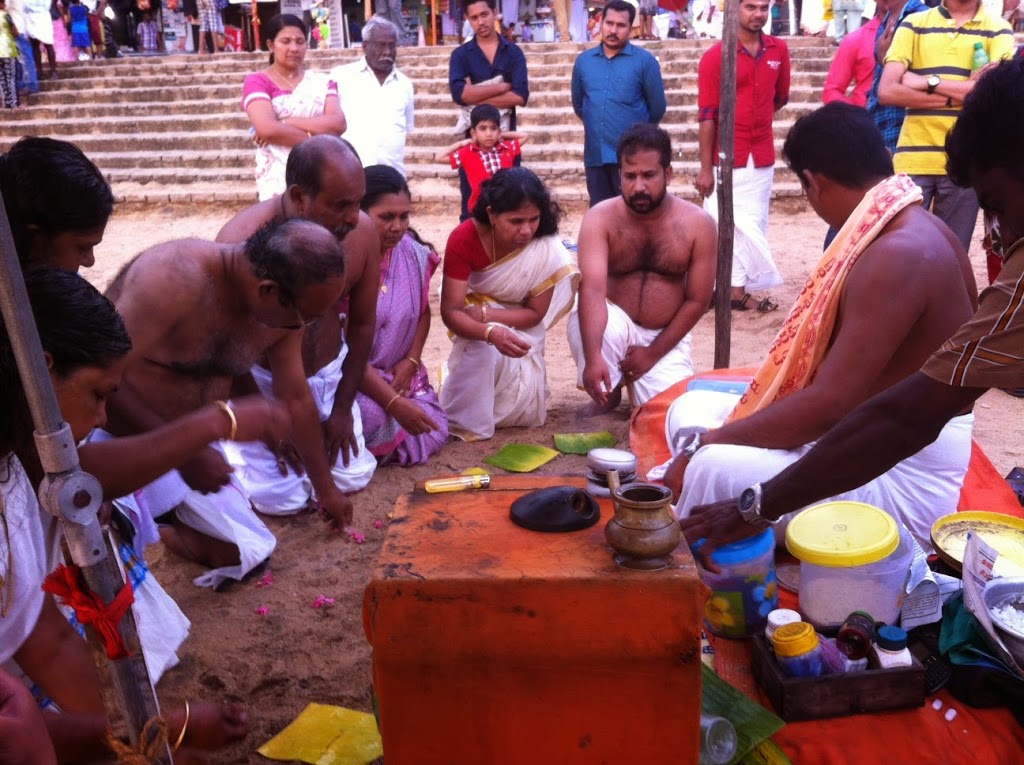
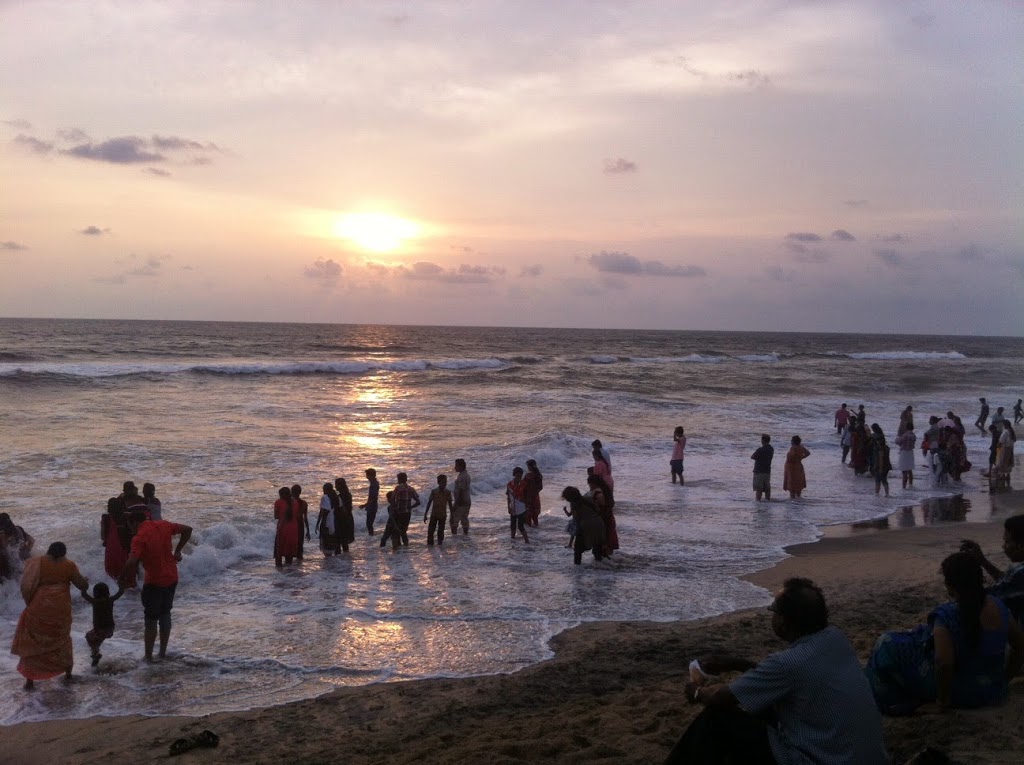



you two really know how to wear the traditional attire…beautiful!
Well thank you! We do like to try to fit in and not “stick out” much as possible.
Amazing pics guys!!!
Marc Correll
Thanks Marc!
Looks great, and you both look so happy in India. Maybe you can find a way to stay.
Yup we are very happy here. Particularly enjoying Southern Indian food!
Colors and more beautiful colors….Magnificent Goddess in blue…..
Aaah the jewel tones, the beauty of the women..thanks JB!
Oh how beautiful it all seems. It’s so nice to see the side of India that the news stations don’t report.
Thank you~ Charles
India is for sure a contrast of extremes. Severe beauty, severe poverty…
It looks and sounds amazing . The pics are so descriptive and cololurful.
Thanks Roch! We had so much fun taking those photos. Glad you enjoyed them.